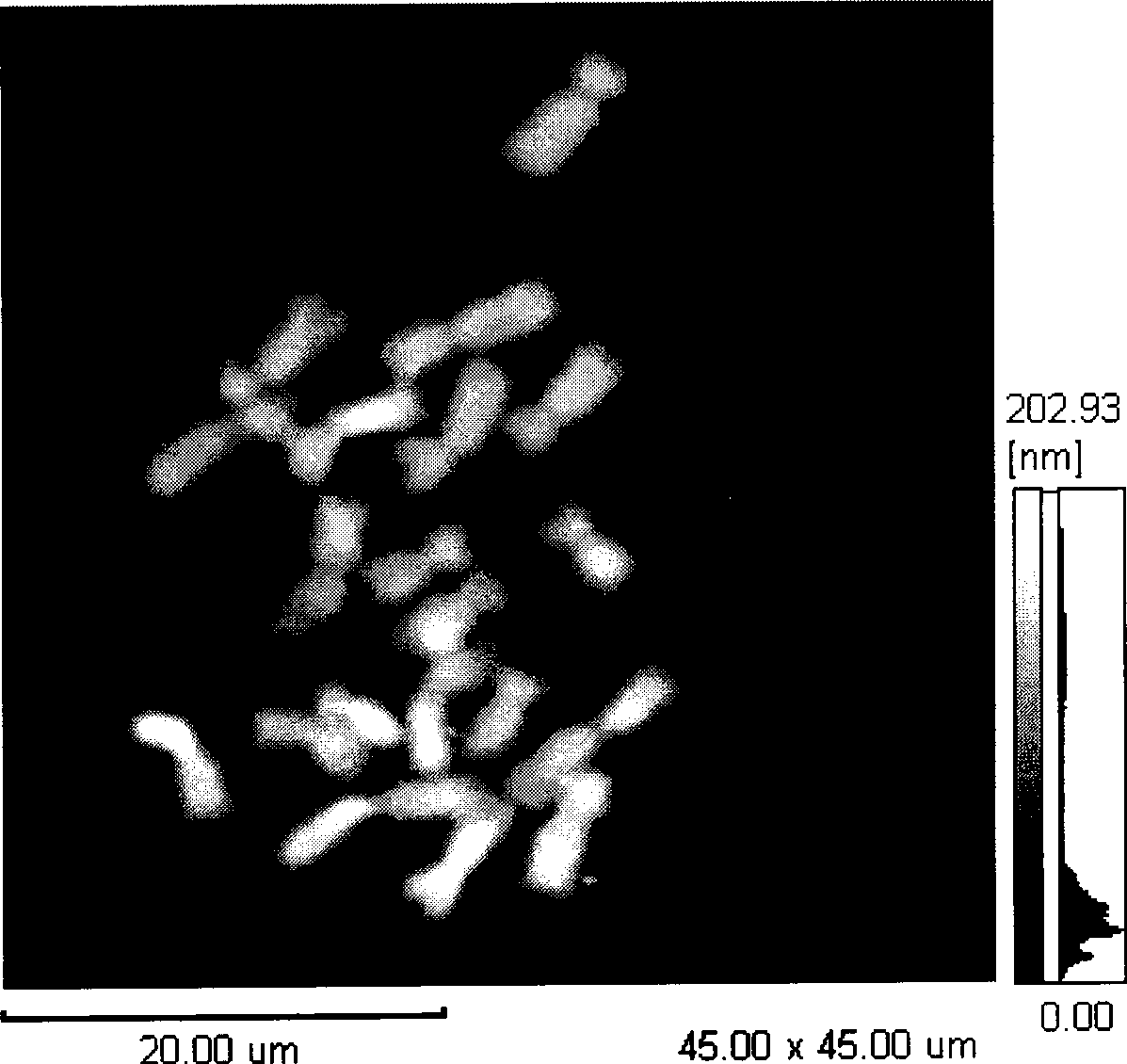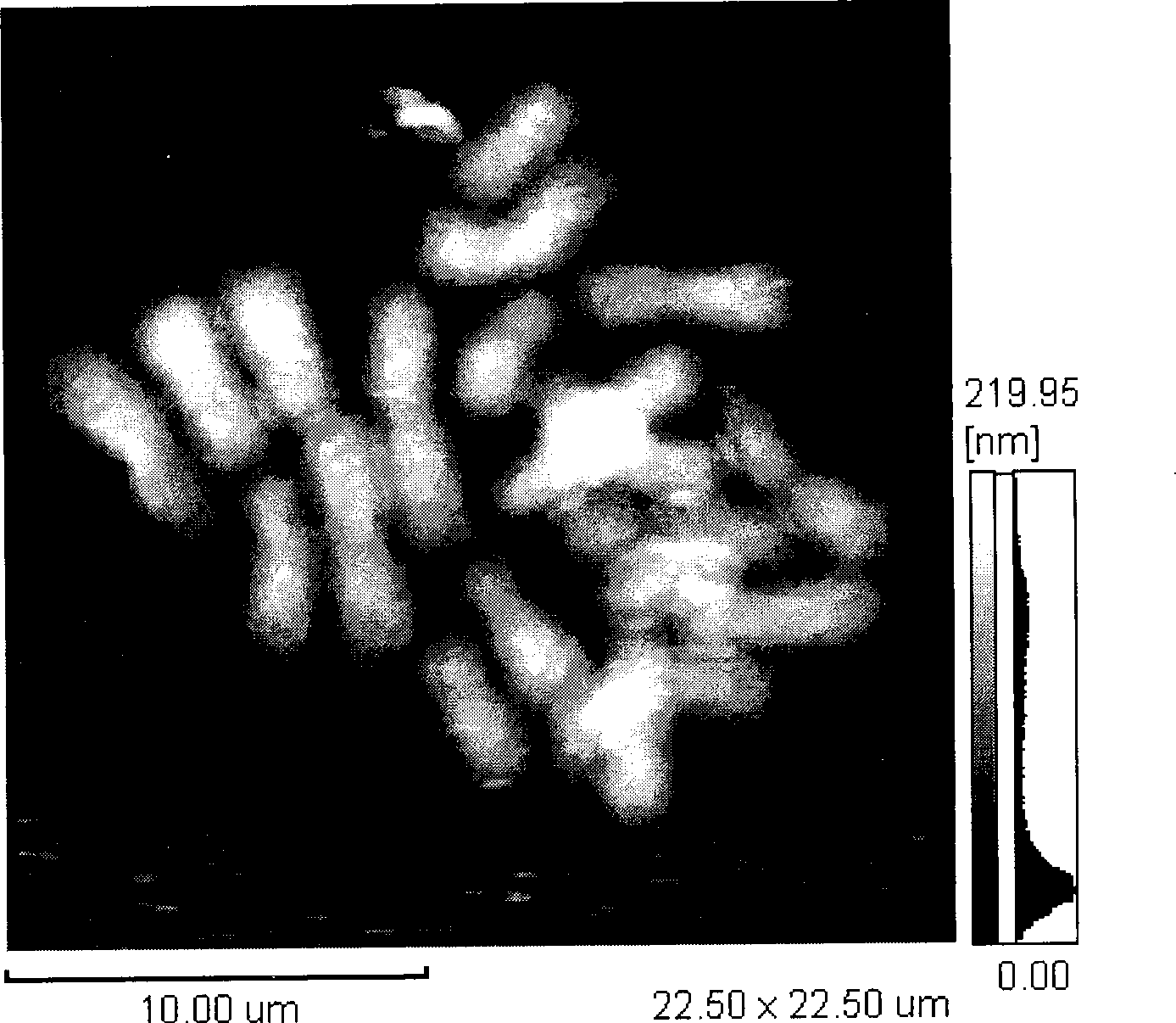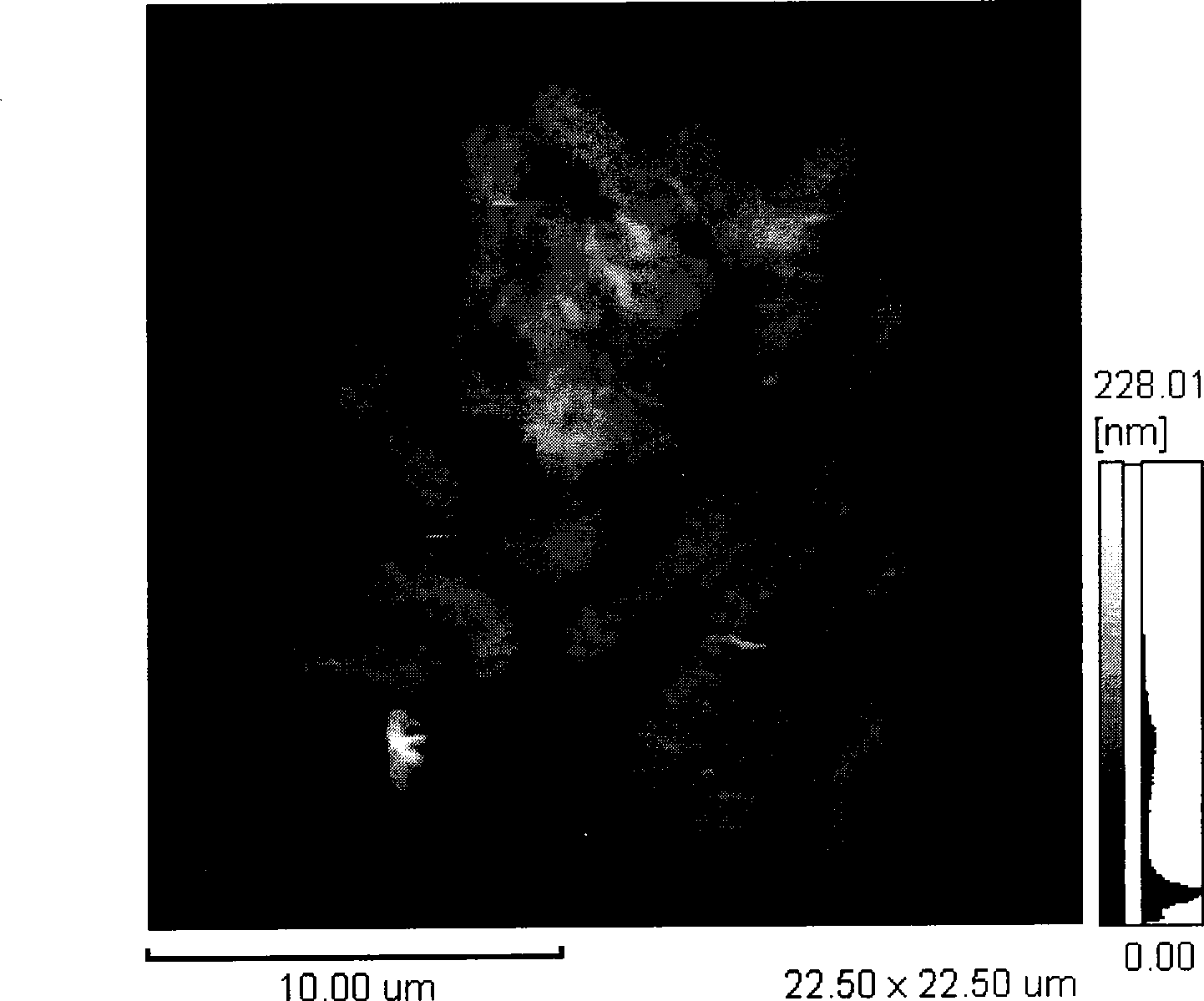Accurate positioning method based on atomic force microscope
An atomic force microscope and precise positioning technology, which is applied to the parts of the instrument, instruments, surface/boundary effects, etc., can solve the problems of time-consuming consumables, insufficient positioning, and substrate damage scales, etc., to avoid time-consuming consumables, The effect of simple, fast and precise positioning
- Summary
- Abstract
- Description
- Claims
- Application Information
AI Technical Summary
Problems solved by technology
Method used
Image
Examples
Embodiment 1
[0019] Observation of maize metaphase chromosomes by atomic force microscope.
[0020] 1. Conventional chromosome preparation method Maize metaphase chromosomes were prepared on glass slides.
[0021] 2. Use an optical phase contrast microscope to find the chromosome to be tested.
[0022] 3. Under the optical microscope, the copper sheet PELCO Position the Center-Marked Grids above the sample to be tested, record the area where the sample is located, and use the adsorption force to place the PELCO Center-Marked Grids are sucked onto the substrate of the sample.
[0023] 4. Attach the PELCO The base of Center-Marked Grids is attached to the stage of atomic force microscope with double-sided tape.
[0024] 5. Scanning PELCO with AFM Center-Marked Grids, the scanning range is reduced step by step, and the probe of the atomic force microscope is positioned above the corresponding grid of the sample to be tested.
[0025] 6. Use the ear wash ball to put the PELCO Cente...
Embodiment 2
[0027] Comparison of Maize Metaphase Chromosomes Before and After DNase I Treatment Using Atomic Force Microscopy
[0028] 1. Conventional chromosome preparation method Maize metaphase chromosomes were prepared on glass slides.
[0029] 2. Use an optical phase contrast microscope to find the chromosome to be tested.
[0030] 3. Under the optical microscope, the copper mesh PELCO Position the Center-Marked Grids above the sample to be tested, record the area where the sample is located, and use the adsorption force to place the PELCO Center-Marked Grids are sucked onto the substrate of the sample.
[0031] 4. Attach the PELCO The base of Center-Marked Grids is attached to the stage of atomic force microscope with double-sided tape.
[0032] 5. Scanning PELCO with AFM Center-Marked Grids, the scanning range is reduced step by step, and the probe of the atomic force microscope is positioned above the corresponding grid of the sample to be tested.
[0033] 6. Use the ear...
PUM
 Login to View More
Login to View More Abstract
Description
Claims
Application Information
 Login to View More
Login to View More - R&D
- Intellectual Property
- Life Sciences
- Materials
- Tech Scout
- Unparalleled Data Quality
- Higher Quality Content
- 60% Fewer Hallucinations
Browse by: Latest US Patents, China's latest patents, Technical Efficacy Thesaurus, Application Domain, Technology Topic, Popular Technical Reports.
© 2025 PatSnap. All rights reserved.Legal|Privacy policy|Modern Slavery Act Transparency Statement|Sitemap|About US| Contact US: help@patsnap.com



